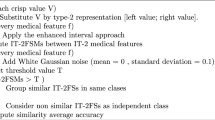Abstract
To select the best interestingness measure appropriate for evaluating the correlation between Chinese medicine (CM) syndrome elements and symptoms, 60 objective interestingness measures were selected from different subjects. Firstly, a hypothesis for a good measure was proposed. Based on the hypothesis, an experiment was designed to evaluate the measures. The experiment was based on the clinical record database of past dynasties including 51 186 clinical cases. The selected data set in this study had 44 600 records. Cold and heat were selected as the experimental CM syndrome elements. Three indicators calculated according to the distances between two CM syndrome elements were obtained in the experiment and combined into one indicator. The Z score, ϕ-coefficient, and Kappa were selected from 60 measures after the experiment. The Z score and ϕ-coefficient were selected according to subjective interestingness. Finally, the ϕ-coefficient was selected as the best measure for its low computational complexity. The method introduced in this paper may be used in other similar territories.
Similar content being viewed by others
References
Zhu W. Standardization research of differentiation system of symptoms and signs and “syndrome” in TCM. Tianjin J Tradit Chin Med (Chin) 2002;19:1–3.
Wang Y, Zhang Q, Zhang Z. Extraction of syndrome elements and destination. J Shandong Univ Chin Med (Chin) 2006;30:6–7.
Sun Z, Xi G, Yi J, Zhao D. Select informative symptoms combination for diagnosing syndrome. J Biol Syst 2007;15:27–38.
Wang J, Chu F, Li J, Yao K, Zhong J, Zhou K, et al. Study on syndrome element characteristics and its correlation with coronary angiography in 324 patients with coronary heart disease. Chin J Integr Med 2008;14:274–280.
Tan S, Tillisch K, Bolus S, Olivas T, Spiegel B, Naliboff B, et al. Traditional Chinese medicine based subgrouping of irritable bowel syndrome patients. Am J Chin Med 2005;33:365–379.
Agrawal R, Imielinski T, Swami A. Mining association rules between sets of items in large databases. ACM SIGMOD Record 1993;22:207–216.
Brijs T, Vanhoof K, Wets G. Defining interestingness for association rules. Intern J Inf Theory Applic 2003;10:370–376.
Brin S, Motwani R, Silverstein C. Beyond market baskets: generalizing association rules to correlations. ACM SIGMOD Record 1997;26:265–276
McGarry K. A survey of interestingness measures for knowledge discovery. Knowl Eng Rev 2005;20:39–61.
Tan P, Kumar V, Srivastava J. Selecting the right objective measure for association analysis. Inf Syst 2004;29:293–313.
Luo K, Wu J. Evaluating criterion of association rules. Control Decision 2003;18:277–280.
Yi W, Wei J, Wang M. Mining efficient association rules. Computr Eng Sci 2005;27:91–94.
Chen J, Gao Y. Evaluating criterion of association rules using efficiency. Comput Eng Applic 2009;45:141–142.
Huang Y, ed. Clinical epidemiology. Beijing: People’s Medical Publishing House; 2006:144–155.
Pecina P. A machine learning approach to multiword expression extraction. Towards a shared task for Multiword Expressions (MWE 2008), 2008:54–57.
Zhou X, Liu B, Wu Z, Feng Y. Integrative mining of traditional Chinese medicine literature and MEDLINE for functional gene networks. Artif Intel Med 2007;41:87–104.
Piatetsky-Shapiro G. Discovery, analysis, and presentation of strong rules. Knowledge Discov Databases 1991:229–248.
Lenca P, Meyer P, Vaillant B, Lallich S. A multicriteria decision aid for interestingness measure selection. Department LUSSI, ENST Bretagne, Technical Report LUSSI-TR-2004-01-EN 2004.
Geng L, Hamilton H. Interestingness measures for data mining: a survey. ACM Comput Surv (CSUR) 2006;38:9.
Zhang Q, Wang Y, Zhang Z, Zhang Q, Song G. The establishment and statistics on the clinical records database of the past dynasties. J Shandong Univ Chin Med (Chin) 2005;29:298–299.
Zhang Q, Wang Y, Zhang L, Yu D, Wang Y. Independent symptoms with the least intension. J Beijing Univ Tradit Chin Med (Chin) 2010:5–10.
Han J, Kamber M, eds. Data mining: concepts and techniques. 2nd ed. The morgan kaufmann series in data management systems. San Francisco: Morgan Kaufmann Publishers; 2006:388.
Author information
Authors and Affiliations
Corresponding author
Additional information
Supported by National Natural Science Fundation of China (No. 30772695, No. 81001500); 11th Five-Year National Science Support Project of China (No. 2006BAI08B01-05); National Science and Technology Major Projects (No. 2009ZX10005-019)
Rights and permissions
About this article
Cite this article
Zhang, L., Yu, Dl., Wang, Yg. et al. Selecting an appropriate interestingness measure to evaluate the correlation between Chinese medicine syndrome elements and symptoms. Chin. J. Integr. Med. 18, 93–99 (2012). https://doi.org/10.1007/s11655-011-0859-z
Received:
Published:
Issue Date:
DOI: https://doi.org/10.1007/s11655-011-0859-z




